Comparison review: 2022 Honda HR-V Hybrid v Toyota C-HR Hybrid
These two compact hybrid SUVs give Australian buyers an easy way to slash their fuel bills dramatically. SEE THE WINNER.
New Cars
Don't miss out on the headlines from New Cars. Followed categories will be added to My News.
Honda and Toyota raced to be the first to introduce hybrid technology in Australia back in 2001, when the Honda Insight pipped the Prius to the post.
Those egg-shaped sedans are no longer on sale, replaced by attractive compact crossovers more representative of today’s tastes.
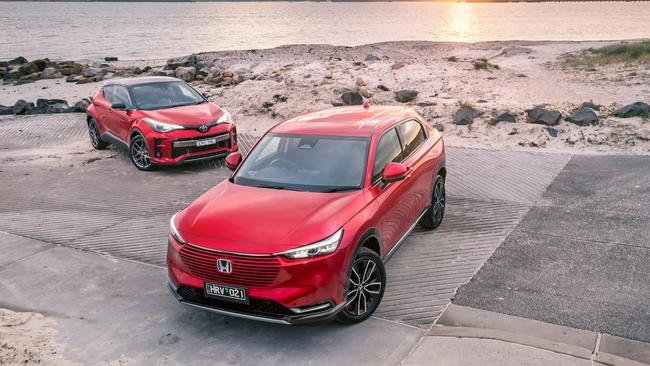
HONDA HR-V e:HEV L
The HR-V is Honda’s hybrid hope in 2022.
An off-again, on-again relationship with hybrid tech is reignited in a simplified – and expensive – HR-V range with just one electrified option.
Priced from a fixed $45,000 drive-away Australia-wide, the HR-V is generously equipped.
Honda’s 7-inch digital driver display and 9-inch central touchscreen are large, its Apple CarPlay connectivity is wireless and the tailgate is powered.
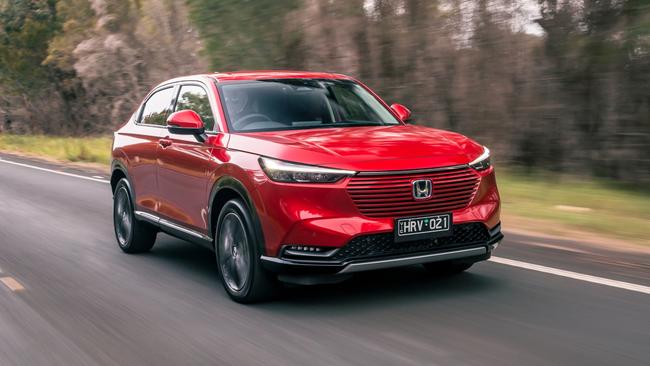
Heating for the seats, steering wheel and windscreen are welcome touches on chilly mornings. The conservatively-styled cabin has a mix of premium and cheap-feeling materials, including slippery plastic cubbyhole liners that don’t secure your phone properly.
Honda’s seats are more accommodating but less supportive than the Toyota’s sporty chairs, and it has superior visibility all around – plus front and rear parking sensors missing from the C-HR.
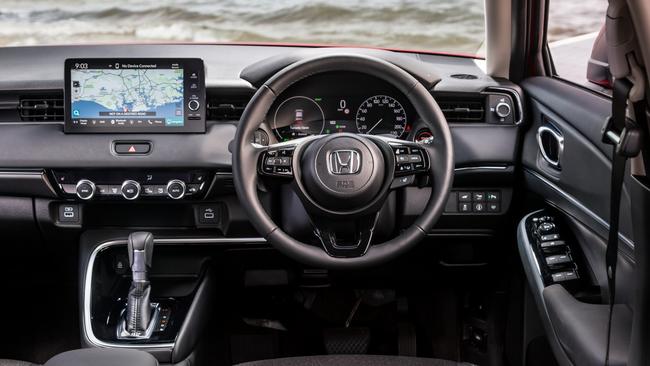
Back seat passengers are treated to better headroom and larger windows than the Toyota, while dual air vents and USB power outlets are a thoughtful inclusion.
But there are only two seatbelts in the back and the Honda’s slightly smaller boot concedes practical points.
Honda wins back ground with servicing priced at little more than half the Toyota’s ask at $625 for five years, along with a small power advantage from its 1.5-litre hybrid engine.
The Honda uses 4.3L/100km of petrol to make 93kW and 253Nm, driving the front wheels through a continuously variable automatic transmission.
HR-V customers get shift paddles to dial up their preferred level of brake regeneration, along with a choice of three driving modes to make the most of each journey.
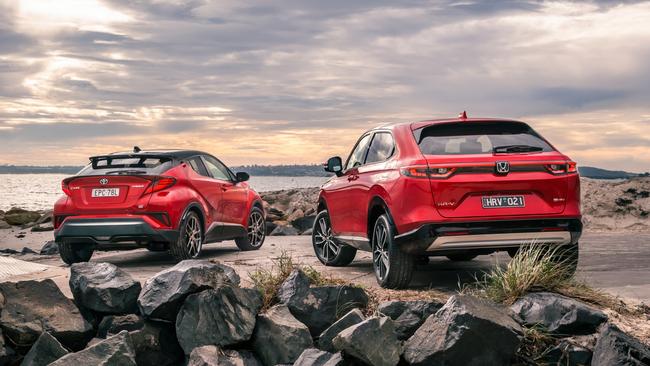
It feels perky at low speed, easily spinning the front wheels if you’re heavy on the throttle.
It also feels strong in the hills, though its smaller petrol engine works harder and makes more noise.
There’s also more road noise on coarse surfaces.
Honda’s steering is far more direct than its rival and wooden-feeling brakes require deliberate application. Soft springs return superior comfort on rough roads but inferior control to the more composed Toyota.
The Honda can feel floaty and occasionally imprecise.
TOYOTA C-HR GR SPORT
Though Honda was first to market, Toyota has done more for the hybrid cause, selling more than 250,000 examples in Australia.
The C-HR compact SUV is available in two trims, one with an eye for technology and another focused on performance.
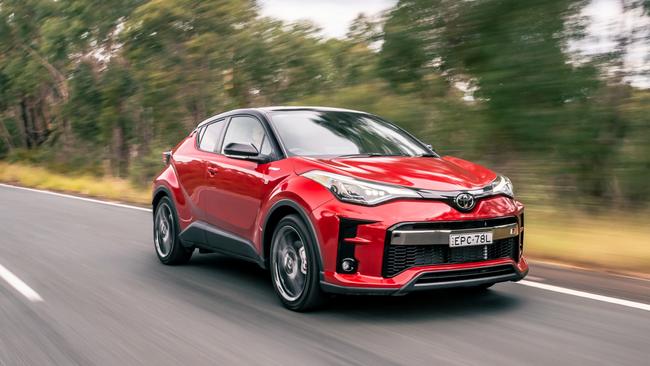
Toyota is adding some pizzazz across its range, which is why our test car wears “GR Sport” badges alongside a bold bodykit, 19-inch alloys, a sportier cabin and lower, stiffer suspension that draws parallels to its growing line-up of performance cars.
Cheaper to buy at about $42,000 drive-away, the C-HR GR Sport misses out on Honda’s powered tailgate, heated seats, wireless smartphone mirroring and larger touchscreens.
But it looks sharp in the driveway, thanks to dark chrome wheels, eye-catching white brake calipers and a more purposeful stance.
Supportive seats trimmed in suede-like material join black headlining in a five-year-old cabin that feels dated.
Fiddly infotainment screen buttons and a lack of smartphone storage options join a cozy vibe that verges on claustrophobic in the rear.
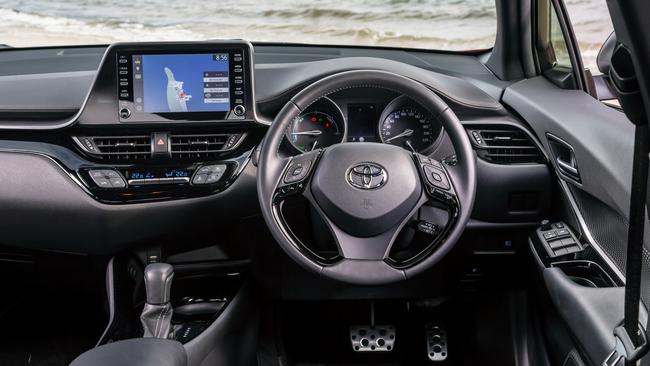
Over-the-shoulder vision is compromised in the Toyota, which technically has room for three people in the rear, but a lack of air vents and electrical outlets disappoints.
Both cars have a good array of driver assistance tech, including auto emergency braking, active cruise control and rear cross-traffic alerts, but only the C-HR has a driver’s knee airbag. Slightly larger and a little heavier than the Honda, Toyota’s machine has a similar hybrid motor that claims identical 4.3L/100km fuel use.
The Toyota’s bigger 1.8-litre motor produces 90kW with hybrid help, delivering power in a more measured manner that doesn’t trouble the tyres in dry conditions.
It’s also quieter than the Honda – both in road noise and under the bonnet – and a more progressive brake response reflects Toyota’s hybrid expertise.
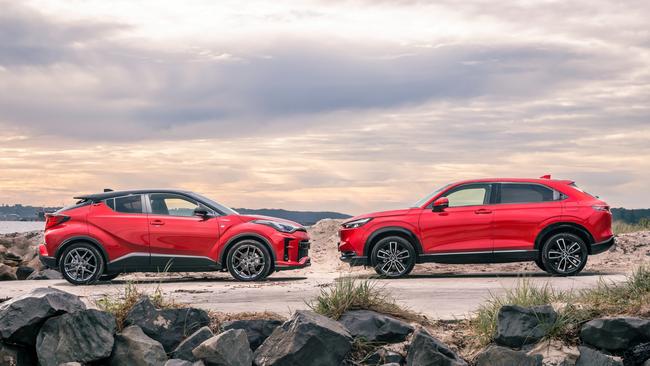
This GR Sport model feels a little like a hot hatch on the road, with an occasionally busy ride over bad surfaces that settles into superior control when you arrive at a corner. Happier to tighten its line if you lift off the gas mid-corner, the Toyota isn’t let down by slow steering and body roll. It’s easily the driver’s pick.
VERDICT
Folks who want a roomy cabin with the latest toys should lean toward the Honda but the Toyota wins thanks to its lower entry price and superior driving experience.
HONDA HR-V e:HEV L VITALS
PRICE $45,000 drive-away
ENGINE 1.5-litre 4-cyl hybrid, 96kW and 253Nm
WARRANTY/SERVICE 5 years, unlimited km, $625 for 5 years
SAFETY Six airbags, auto emergency braking, active cruise control, lane-keep assist, blind-spot monitoring, rear cross-traffic alert
THIRST 4.3L/100km
BOOT 304 litres
SPARE Repair kit
TOYOTA C-HR GR SPORT VITALS
PRICE About $42,000 drive-away
ENGINE 1.8-litre 4-cyl hybrid, 90kW
WARRANTY/SERVICE 5 years/unlimited km, $1100 for 5 years
SAFETY Seven airbags, auto emergency braking, active cruise control, lane-keep assist, blind-spot monitoring, rear cross-traffic alert
THIRST 4.3L/100km
BOOT 318 litres
SPARE Temporary




